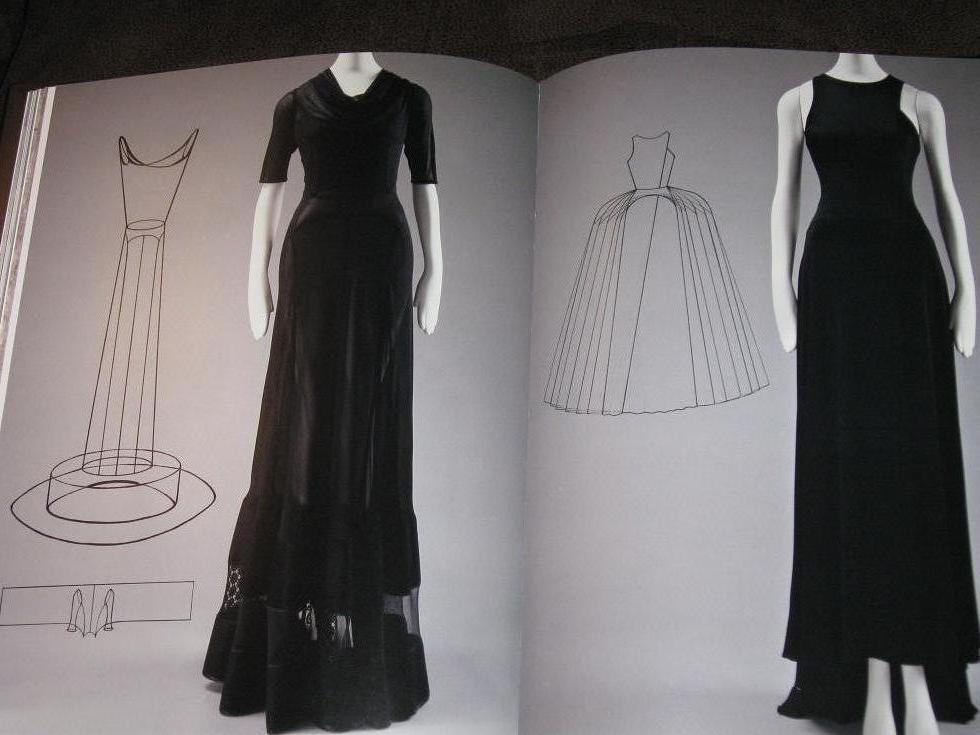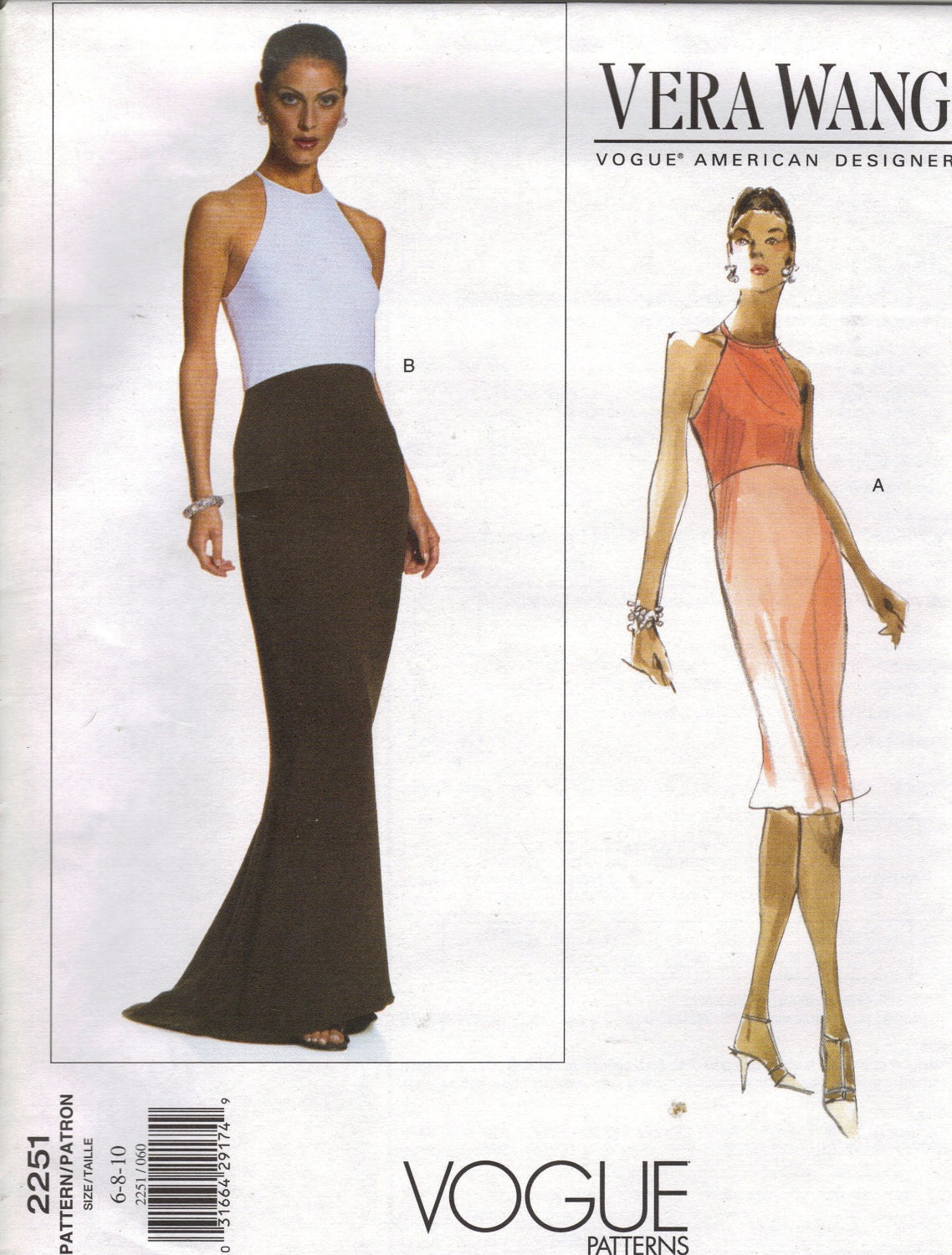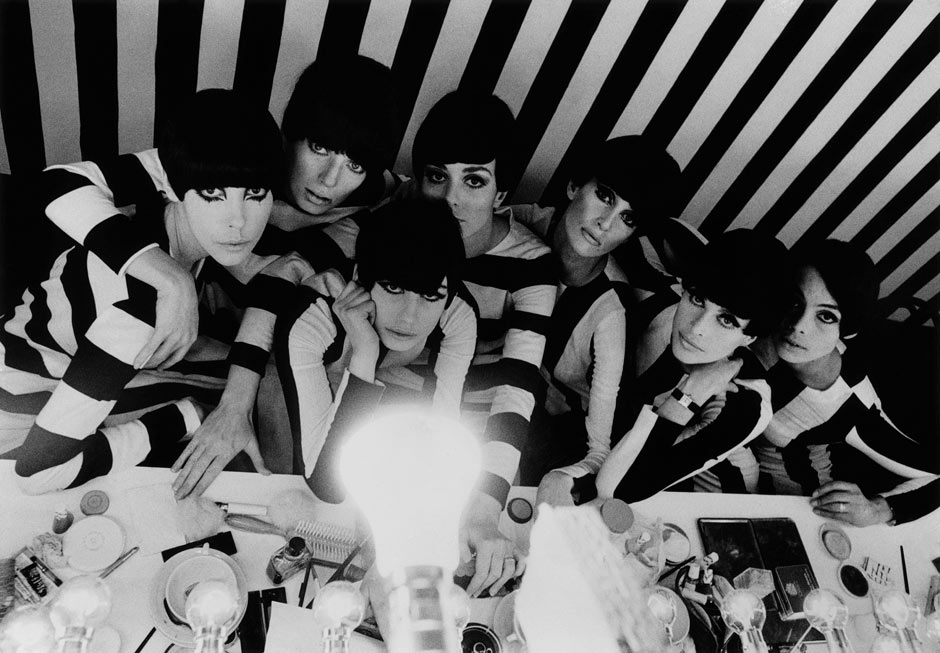![Alber Elbaz sketch for Guy Laroche, L'Officiel no. 813 (March 1997) Alber Elbaz sketch for Guy Laroche, L'Officiel no. 813 (March 1997)]()
![Alber Elbaz sketch for Guy Laroche, L'Officiel no. 813 (March 1997) Alber Elbaz sketch for Guy Laroche L'Officiel 813]()
Guy Laroche is Vogue Patterns’ most established licensee. The first Guy Laroche pattern was released over fifty years ago and, despite a lapse in licensing after the mid-Eighties, Vogue Patterns renewed its agreement with the house in the decade following Guy Laroche’s death in 1989. The designer who prompted this renewal was Alber Elbaz: Lanvin’s current designer worked as creative director at Laroche for two years before he was recruited to Yves Saint Laurent.
To reintroduce Guy Laroche, Vogue Patterns chose three designs from the Fall/Winter 1998-99 ready-to-wear, Elbaz’s third collection for the house. (You can read about Elbaz’s first two collections for Laroche here and here.) The cover of the November/December 1998 issue of the magazine proclaims, “Introducing Guy Laroche: A Fresh Young Attitude” and, inside, the Laroche feature calls the young Elbaz “one of the brightest talents in Paris.” The company also licensed a fourth design from the Spring/Summer 1999 collection, Elbaz’ last for Guy Laroche.
1. Guy Laroche Prêt-à-porter Fall/Winter 1998-99 (shown March 1998)
The Guy Laroche Fall 1998 ready-to-wear collection showed off Elbaz’s skillful tailoring with pinstripe and monochrome looks, as well as entire outfits of red sequins and long dresses in jersey and velvet. In counterpoint to the commercially viable clothes, the models were made up to mask their eyebrows, and almost all wore Afro wigs. (See Anne-Marie Schiro’s review here.)
L’Officiel 1000 modèles devoted six pages to this collection. Here’s a sample:
![Laroche FW98a Alber Elbaz for Guy Laroche FW RTW 1998-99]()
L’Officiel 1000 modèles no. 12 (1998) via jalougallery.com
![Laroche FW98b Alber Elbaz for Guy Laroche FW RTW 1998-99]()
L’Officiel 1000 modèles no. 12 (1998) via jalougallery.com
Vogue Patterns’ first selection from the collection, Vogue 2202, is a skirt suit with ruched, bias jacket:
![Vogue 2202 (1998) Vogue 2202 Alber Elbaz for Guy Laroche bias skirt suit pattern]()
Vogue 2202 by Alber Elbaz for Guy Laroche (1998) Bias jacket and skirt
![Vogue 2202 schematic Vogue 2202 schematic]()
Technical drawing for Vogue 2202
Here’s the envelope description: Misses’ jacket & skirt. Close-fitting, bias, interfaced, lined, below hip jacket has collar, slightly extended shoulders, shoulder pads, ruching, no side seams and long, two-piece sleeves with vent and button/buttonhole trim. Straight, lined skirt, above mid-knee or mid-calf, has contour waist and back zipper. Purchased top.
The runway version of the jacket seems to have been shown with a matching turtleneck and pants:
![Laroche L'Officiel a Alber Elbaz for Guy Laroche FW RTW 1998-99]()
Image via jalougallery.com
Vogue 2206 is a sleek suit consisting of flared pants, self belt, and a tailored jacket with rounded lapels, shown made up in doubleknit jersey:
![Vogue 2206 (1998) Vogue 2206 Alber Elbaz for Guy Laroche pantsuit pattern]()
Vogue 2206 Alber Elbaz for Guy Laroche (1998) Pantsuit and belt
![Vogue 2206 schematic Vogue 2206 schematic]()
Technical drawing for Vogue 2206
The envelope description reads: Misses’ jacket, pants & belt. Fitted, unlined, hip length jacket has front extending into collar (wrong side shows) and to side back, no side seams, shoulder pads, flaps, pockets and lined, long, two-piece sleeves with button vent. Fitted, straight-legged pants have contour waist, carriers, belt and side zipper. Purchased top.
The third selection, Vogue 2205, is another pantsuit, this one with flat-front pants and a jacket with exposed zippers:
![Vogue 2205 (1998) Vogue 2205 Alber Elbaz for Guy Laroche jacket and pants pattern]()
Vogue 2205 by Alber Elbaz for Guy Laroche (1998) Jacket and pants
![Vogue 2205 schematic Vogue 2205 schematic]()
Technical drawing for Vogue 2205
Here’s the envelope description: Misses’ jacket & pants. Semi-fitted, lined, above hip jacket has neck bands, front yokes, inset bands, side panels, no side seams, side front pockets, exposed front/sleeve zippers and long, two-piece sleeves. Straight-legged pants have waistband, carriers, side pockets and back zipper. Purchased top and belt.
This design made the cover of the December counter catalogue:
![Vogue Patterns catalogue Dec1998 Vogue 2205 by Guy Laroche on the cover of the Vogue Patterns store catalog, December 1998]()
Vogue Patterns catalogue, December 1998. Image via eBay.
Elbaz sent out variations on the Vogue 2205 jacket—in both jacket and coat lengths, in charcoal, a mauve-tinged grey, two shades of red, and black leather. Runway images show the jackets worn with matching skirts and tops:
![Laroche L'Officiel d Alber Elbaz for Guy Laroche FW RTW 1998-99]()
Image via jalougallery.com
L’Officiel included the black leather version in an “Emma Peel” fall trend feature—the Ralph Fiennes/Uma Thurman film The Avengers had opened late that summer:
![L'Officiel no. 829 (1998) L'Officiel no. 829 (1998)]()
Bottom left: Laroche jacket in plongé lambskin, L’Officiel, October 1998. Image via jalougallery.com
2. Guy Laroche Prêt-à-porter Spring/Summer 1999 (shown October 1998)
Elbaz was leaving to design Yves Saint Laurent Rive Gauche, and his last collection for Guy Laroche was a sad farewell. To a soundtrack of Edgar Allan Poe’s “Annabel Lee,” the models walked the runway in floor-grazing skirts, dressed in sombre colours accented with contrast inserts or embellished with drooping flowers. (See Suzy Menkes, “Designers Struggling to Find a Voice,” and Anne-Marie Schiro, “Anticipating the Mood: Retailers Check the Pulse.”)
Here is the collection image from L’Officiel 1000 modèles:
![Laroche SS99 Alber Elbaz for Guy Laroche SS RTW 1999]()
L’Officiel 1000 modèles no. 2 (1998) via jalougallery.com
Vogue Patterns’ selection from this collection, Vogue 2497, is a modern evening suit with tailored jacket, long skirt, and side-buttoned camisole top:
![Vogue 2497 (2000) Vogue 2497 Alber Elbaz for Guy Laroche eveningwear pattern]()
Vogue 2497 by Alber Elbaz for Guy Laroche (2000) Jacket, top, and skirt
![Vogue 2497 schematic Vogue 2497 schematic]()
Technical drawing for Vogue 2497
The envelope description reads: Misses’ jacket, top & skirt. Fitted, partially interfaced, lined, above-hip jacket has collar, cut-in shoulders, shoulder pads, side panels, no side seams, flaps, welt pockets and three-piece, below-elbow sleeves. Close-fitting, lined top has bias shoulder straps, princess seams, side slits and button/loop closings. Slightly flared, below-waist skirt, floor-length, has right side mock pleat and side zipper.
The spring collection had a number of variations on the Vogue 2497 evening suit, some with flowers at the lapel, some with colour blocking, whether a single sleeve, a narrow contrast panel, or a broad hem band. The ensembles were shown with the jacket worn alone or open over a white t-shirt. The skirt’s mock pleat is visible in this Corbis image:
![GUY LAROCHE: SPRING-SUMMER 1999 PRET A PORTER COLLECTION Colette Pechekhonova in Guy Laroche SS 1999 Corbis photo]()
Model: Colette Pechekhonova. Image © Stephane Cardinale/Sygma/Corbis.
These Alber Elbaz/Laroche patterns have some interesting, unusual design features, such as Vogue 2202′s bias jacket or the three-piece sleeves on Vogue 2497. But I find that, despite promoting the freshness of Elbaz’s work at the house, Vogue Patterns opted for changes that diminish the designs’ freshness and modernity. Why not show a matching, tomato-red skirt with the Vogue 2205 jacket, or pants with the feminine, ruched Vogue 2202 jacket? Or a t-shirt with Vogue 2497′s evening suit? It feels to me like underestimating home sewers’ appetite for fashion.
Have you made up an Elbaz/Laroche pattern?
Tagged:
1990s,
Alber Elbaz,
designer,
Guy Laroche,
ready-to-wear,
Vogue Patterns ![]()
![]()
![]()
![]()
![]()
![]()
![]()
![]()


































































































































































































